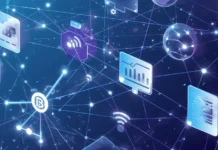The world of mobile networks is evolving rapidly, and 5G technology is leading the charge. Promising faster speeds, lower latency, and better connectivity, 5G is not just an upgrade from 4G—it’s a game-changer for the way we communicate, work, and live. In this article, we’ll explore what 5G is, how it works, and its impact on our digital world.
What is 5G?
5G stands for fifth-generation wireless technology. It is designed to deliver faster internet speeds, more reliable connections, and support for a massive number of devices simultaneously. Unlike 4G, which mainly focused on smartphones, 5G is built to handle IoT devices, smart cities, and real-time applications.
- Speed: 5G can reach speeds up to 10 Gbps—roughly 100 times faster than 4G.
- Latency: The time it takes for data to travel from one point to another is drastically reduced to as low as 1 millisecond.
- Capacity: 5G can support thousands of devices per square kilometer, enabling large-scale IoT applications.
How Does 5G Work?
5G uses new radio frequencies and advanced technologies to improve performance:
- Millimeter Waves (mmWave) – High-frequency waves that carry more data but have shorter ranges, ideal for dense urban areas.
- Small Cells – Low-power antennas that cover small areas to boost coverage and speed in crowded regions.
- Massive MIMO (Multiple Input, Multiple Output) – Uses multiple antennas to send and receive more data simultaneously.
- Beamforming – Directs signals toward specific devices instead of broadcasting in all directions, improving efficiency.
Together, these technologies allow 5G to deliver high-speed, low-latency connections even in areas with heavy network traffic.
Impact of 5G on Mobile Networks and Society
1. Faster Internet and Seamless Streaming
With 5G, downloading a full HD movie will take seconds instead of minutes. Video calls, streaming, and online gaming become smoother, even in crowded areas.
2. Smart Cities and IoT
5G enables smart traffic lights, connected cars, and industrial sensors, improving efficiency, safety, and convenience.
3. Enhanced Healthcare
Doctors can use real-time remote surgery or monitor patients with connected devices thanks to the low latency of 5G.
4. Business and Industry Transformation
5G supports automation, AI-powered analytics, and real-time communication in industries, revolutionizing supply chains, logistics, and manufacturing.
5. Emerging Technologies
5G creates opportunities for augmented reality (AR), virtual reality (VR), and autonomous vehicles, unlocking innovations that were impossible with previous networks.
Conclusion
5G technology is more than just faster internet; it’s a foundation for the next generation of digital innovation. By enabling low-latency, high-speed, and massive connectivity, 5G will transform how we live, work, and interact with technology. As the network continues to expand globally, it will power smart cities, IoT devices, and futuristic applications, making the future of connectivity faster, smarter, and more reliable than ever before.




